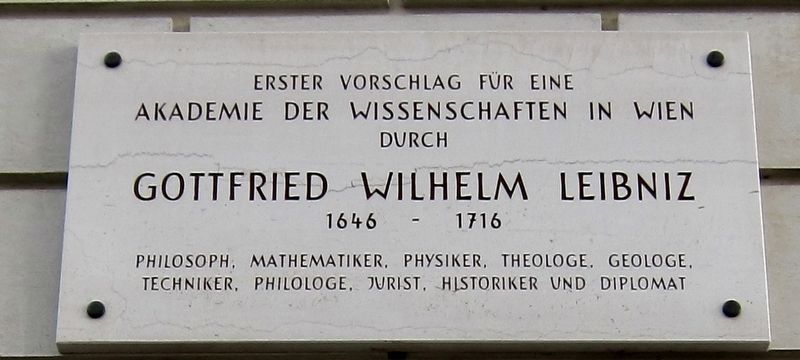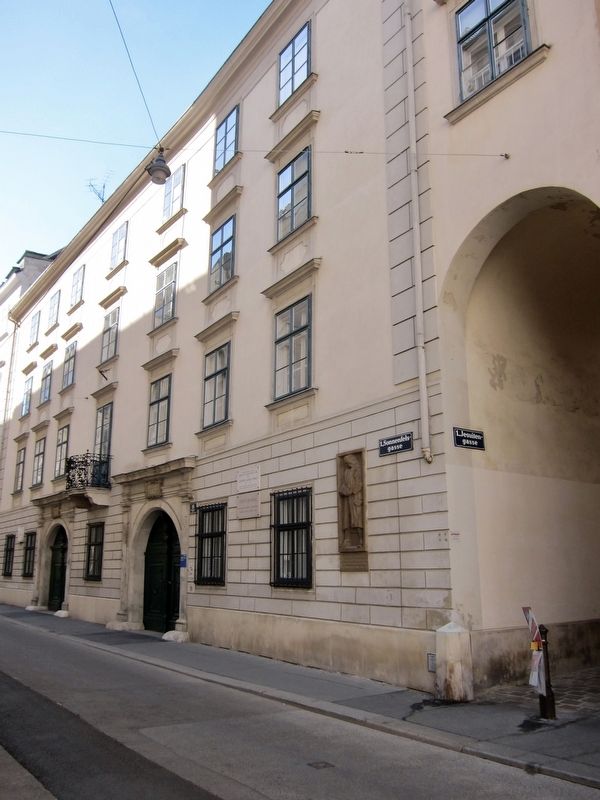Gottfried Wilhelm Leibniz
Akademie der Wissenschaften in Wien
durch
Gottfried Wilhelm Leibniz
1646 - 1716
Philosoph, Mathematiker, Physiker, Theologe, Geologe, Techniker, Philologe, Jurist, Historiker und Diplomat
-
Topics. This historical marker is listed in these topic lists: Education • Science & Medicine. A significant historical date for this entry is July 1, 1646.
Location. 48° 12.545′ N, 16° 22.63′ E. Marker is in Wien. It is in Stephansdom. Marker is at the intersection of Sonnenfelsgasse and Jesuitengasse, on the right when traveling west on Sonnenfelsgasse. Touch for map. Marker is at or near this postal address: Sonnenfelsgasse 19, Wien 1010, Austria. Touch for directions.
Other nearby markers. At least 8 other markers are within walking distance of this marker. Former University Office (here, next to this marker); Ulrich Zwingli (a few steps from this marker); Rudjer J. Bošković (within shouting distance
of this marker); Franz Schubert (within shouting distance of this marker); Die Aula der Wissenschaften / Hall of Sciences (about 90 meters away, measured in a direct line); Charles de L'Ecluse (Clusius) (about 150 meters away); Leoš Janáček (about 150 meters away); Andrij Hnatschyn (about 150 meters away). Touch for a list and map of all markers in Wien.
Also see . . . Gottfried Wilhelm Leibniz (Wikipedia). "Gottfried Wilhelm (von) Leibniz (sometimes spelled Leibnitz) (1 July 1646 [O.S. 21 June] – 14 November 1716) was a prominent German polymath and one of the most important logicians, mathematicians and natural philosophers of the Enlightenment. As a representative of the seventeenth-century tradition of rationalism, Leibniz's most prominent accomplishment was conceiving the ideas of differential and integral calculus, independently of Isaac Newton's contemporaneous developments....In philosophy, Leibniz is most noted for his optimism, i.e. his conclusion that our universe is, in a restricted sense, the best possible one that God could have created, an idea that was often lampooned by others such
Credits. This page was last revised on February 1, 2022. It was originally submitted on January 15, 2020, by Andrew Ruppenstein of Lamorinda, California. This page has been viewed 128 times since then and 9 times this year. Photos: 1, 2. submitted on January 15, 2020, by Andrew Ruppenstein of Lamorinda, California.

